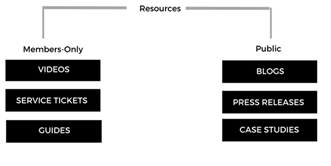Erin Reeve | |
February 16, 2018
Metadata and taxonomy models are important parts of every good web content strategy. Metadata is used to assign descriptive data, and taxonomy gives you the vocabulary to do so. Used together, the two provide an easy way for users to find content on their site.
Metadata
Metadata is information about attributes and elements of a particular document or webpage. Most content management systems automatically add metadata when content is created (e.g., date published, date created, author, file size, etc.). However, there are some things that you’ll want to add manually. Most importantly for web pages – you’ll want to add a page summary and meta tags.
Note: If you’re using ClearVantage Association Management Software alongside of CV Connect CMS, the option to add keywords, tags, and descriptions will populate as soon as you post content.
Taxonomy
Taxonomy is creating and using descriptive terms to label content and assets into hierarchical relationships on your site. The end result is a hierarchical structure that allows you to rearrange, reuse, organize and distribute content in any number of ways. It also sets up a controlled vocabulary that ultimately makes it easier for users to search and find what they’re looking for.
The first step is to create and label content into defined categories or sections, and then organize collections of connected content. Here is simplified visual of how this should work:

The structure can be as simple, complex or interrelated as you’d like. For example, you can categorize content and assets so that they appear in multiple areas of the site.
For more information, please refer to this article posted on Simplea.